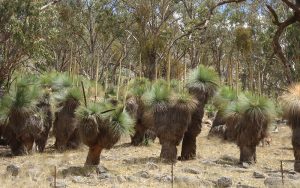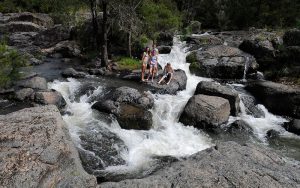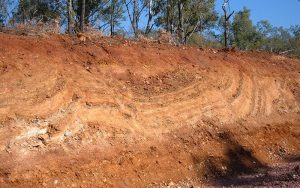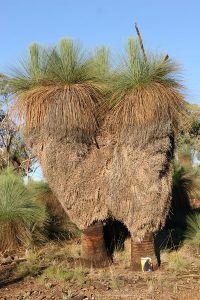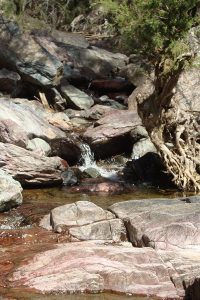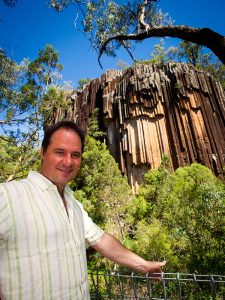Geological Wonders
Heading west from Bingara you can view spectacular volcanic land forms from twenty million years ago.
Rocky Creek Glacial Area
This geological wonder should not be missed!
A vast amount of weathering and erosion has occurred over the years, so the original glacial landscape features have been changed by the subsequent flow of water. The Glacial Area is an excellent place to picnic and cool off in summer.
Visit Rocky Creek Glacial Area page >>
Sawn Rocks
Further west along the same road is another fine example of geological wonder. Sawn Rocks, situated on the western edge of Mount Kaputar National Park, is well worth a visit. These organ pipe like rock formations, formed during a volcanic upheaval millions of years ago, hang like sentries over a lovely creek.
Gas barbecues, picnic tables and toilets are also available here.
Visit Sawn Rocks page >>
Fabulous Folds & Faults
Road upgrading in 2005 about 1km west of Bingara exposed an amazing section of approximately 340 million year old bedrocks that make up the Bingara Range. These rocks were laid down as marine sediments during the mid to late Palaeozoic period.
Of special interest are the complex folds and faults (buckling and dislocation) produced by several periods of coastal instability. The latest faulting occurred some twenty million years ago between volcanic eruptions that helped build the Bingara Range.
The area is still unstable and occasional earth tremors occur. These mostly occur along the massive Peel Fault that bounds the granite country to the east from folded sedimentary rocks to the west.
The Bingara Visitor Information Centre has an excellent brochure detailing the Geological Drives which are part of the Fossickers Way.
New Fossil found
In an expedition to a new quarry site, a rare find was unearthed, a beautiful, large Leptophloeum sample with a trilobite attached. The sample is unique, and according to the UNE paleontologist it is the most northern example of a Late Devonian trilobite ever found. Further exploratory work has to be done but it is hoped where there is one trilobite, there’s more. Find out more about this exciting find >>
Natural Wonders
A drive south to the sleepy village of Upper Bingara takes you to the area of Bingara’s golden history. The village was once home to many gold-struck miners and their families who came from all over the world to try their luck. Along the way are numbered triangles on the side of the road which mark the various places of historical and geological interest.
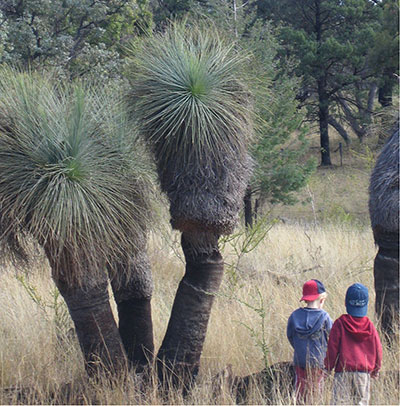
Question:
- What grows at a metre every 100 years?
- What can live to be 1,000 years old?
- What are strange in appearance, uniquely Australian and well adapted to our climate, soils and fire?
Answer:
- Australian grass trees.
A special place to see the grass trees is along the Upper Bingara Road about midway between the old village and the Barraba end of the Barraba Road loop. Here the grass trees are giants, some as tall as 3 metres to the leaf base and with a spear flower up to 4 metres higher.
It’s a great place for photos and for taking visitors, but please don’t damage them, after all, they have stood watch there for centuries…and we should always respect our elders. Please also note that the Grass Trees are on private property… so please leave nothing but footprints and take away only memories and photographs.
Be sure to visit the Three Creeks Tourist Gold Mine on your way.
Visit the Bingara Visitor Information Centre to collect a description sheet (mud map) of the sites before heading to Upper Bingara.
Gallery
- Grass trees Upper Bingara
- Fabulous Folds & Faults


